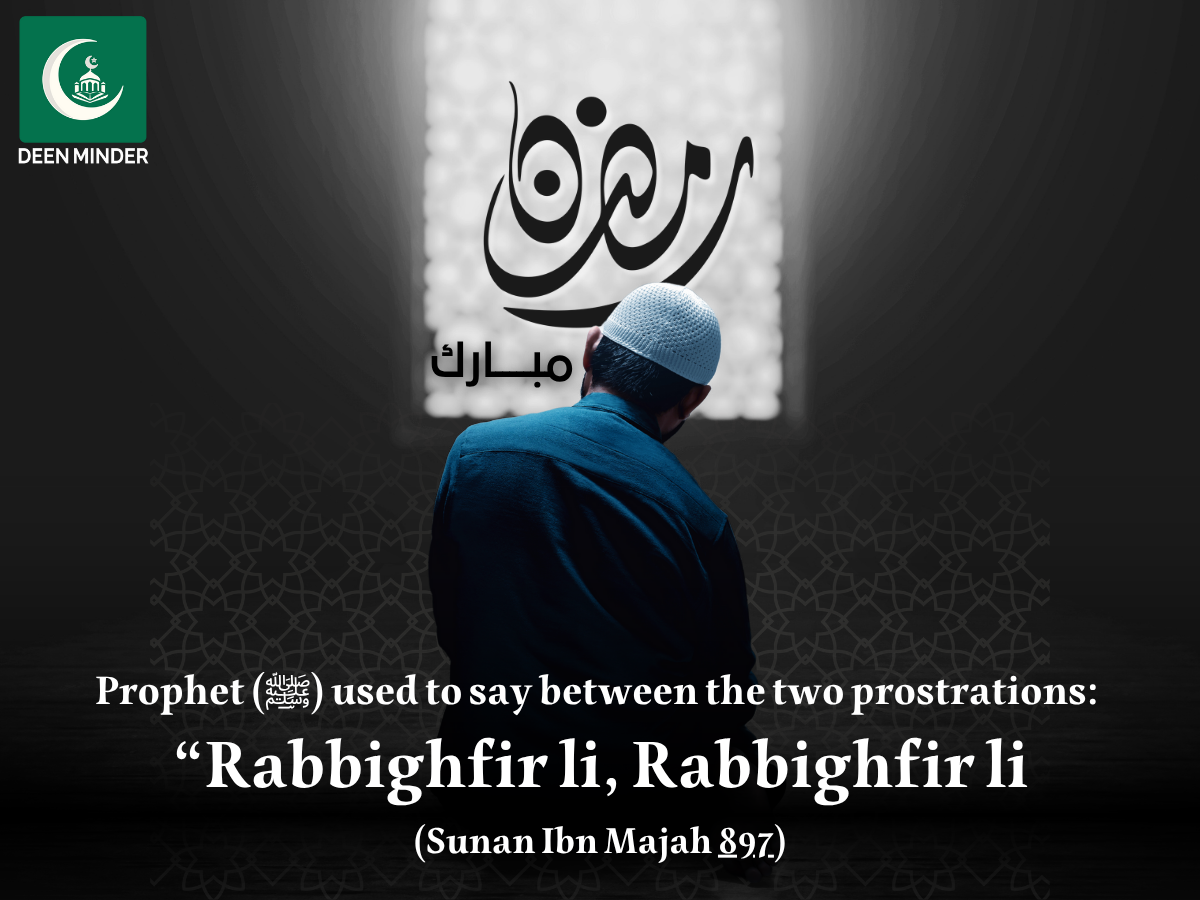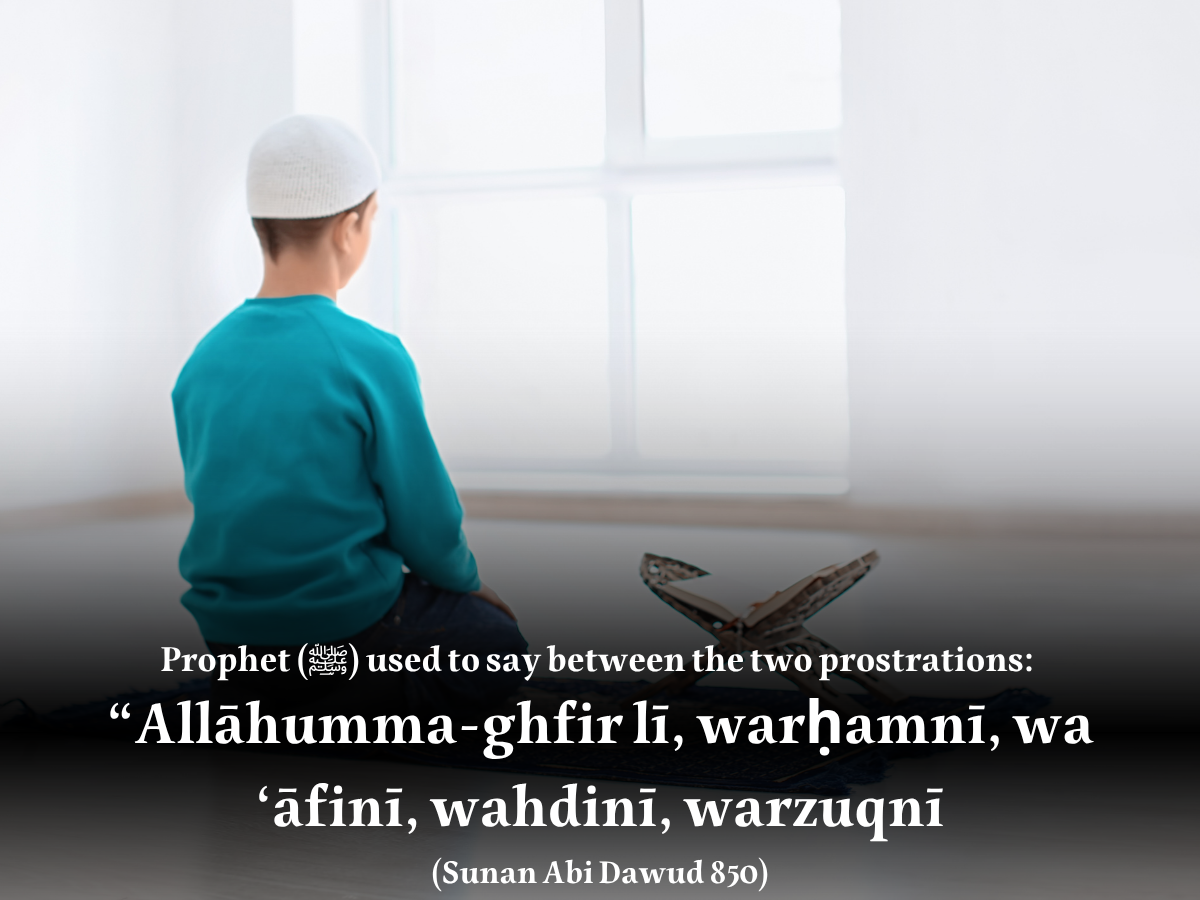My dear brothers and sisters in Islam, As-Salāmu ‘Alaikum wa Rahmatullāhi wa Barakātuh. As we all know that Salah is a means of talking directly to Allah. Every movement, from the raising of the hands in takbir to the whisper of tasleem, carries a dialogue between the servant and the Lord. Each part has its remembrance or dua we have to say, and so there’s a dua while sitting between the two prostrations (dua between sujood).
Unfortunately, many of us rush through this moment, moving quickly to the next sujood as though it is merely a change from one pillar to another. But our Prophet Muhammad ﷺ did not pray this way. His companions reported that he would remain still short enough in that position to say the dua while sitting between the two prostrations (dua between sujood).
Why did he stay short enough in the sitting between the two prostrations? Because in that moment, he ﷺ was making a dua full of humility and need, a dua that summarizes everything a believer asks from his Lord in this world and the Hereafter. That’s why it is important for you and me to memorize the beautiful dua while sitting between the two prostrations (dua between sujood).
Salah is not just a series of movements or empty motions. It is a religious dialogue between the servant and Allah. Each position has its own remembrance (dhikr) and meaning, and understanding what to say in each position is what transforms our prayer from a physical routine into a spiritual, real worship. From the moment we say “Allahu Akbar” till we give the final Salaam, every second is an opportunity to connect with our Lord.
Today, with the permission of Allah, we are going to learn the dua while sitting between the two prostrations (dua between sujood).
The authentic dua while sitting between the two prostrations
This position that we are talking about is when we rise from the first prostration in Salah, where we sit down before going to the second prostration (sujood). The position of the sitting posture between the two prostrations is where we are going to say this dua.
Our Prophet Muhammad ﷺ described this posture clearly in authentic narrations. He would sit upon his left foot and erect his right foot, with his toes facing the Qiblah, resting his hands gently on his thighs, and say the dua while sitting between the two prostrations (dua between sujood).
No1. Dua while sitting between the two prostrations in Arabic
رَبِّ اغْفِرْ لِي، رَبِّ اغْفِرْ لِي
Dua while sitting between the two prostrations in Transliteration
Rabbighfir li, Rabbighfir li
Dua while sitting between the two prostrations in English
O Lord forgive me, O Lord forgive me
It was narrated from Hudhaifah that the Prophet (ﷺ) used to say between the two prostrations: “Rabbighfir li, Rabbighfir li (O Lord forgive me, O Lord forgive me).” (Sunan Ibn Majah, 897)
Another dua that we can recite aside from the first one is the second below…
No2. Dua while sitting between the two prostrations in Arabic
اللَّهُمَّ اغْفِرْ لِي وَارْحَمْنِي وَعَافِنِي وَاهْدِنِي وَارْزُقْنِي
Dua while sitting between the two prostrations in Transliteration
Allāhumma-ghfir lī, warḥamnī, wa ‘āfinī, wahdinī, warzuqnī
Dua while sitting between the two prostrations in English
“O Allah, forgive me, have mercy on me, grant me safety and well-being, guide me, and provide for me.”
The evidence of this was narrated by Abdullah ibn Abbas that the Prophet (ﷺ) used to say between the two prostrations: “O Allah, forgive me, have mercy on me, guide me, heal me, and provide for me.” (Sunan Abi Dawud 850)
Can we say the dua below while sitting between the two prostrations?
There’s another narration for the dua between the two sujood, which people normally say, is the hadith weak or authentic? Let’s see the dua first
رَبِّ اغْفِرْ لِي وَارْحَمْنِي وَاجْبُرْنِي وَارْزُقْنِي وَارْفَعْنِي
Rabbighfir li warhamni wajburni warzuqni warfa’ni
O Lord, forgive me, have mercy on me, improve my situation, grant me provision and raise me in status
(Grade: Daif, weak Sunan Ibn Majah, 898)
This dua is not permissible to say because it is a weak hadith as found in Sunan Ibn Majah 898.
My dear brothers and sisters, Salah is not merely an exercise of the body, it is the soul’s direct communication with Allah. Each position has its own remembrance or prayer we need to say, likewise the dua while sitting between the two prostrations.
This dua also reminds us that we are in constant need of Allah’s forgiveness, mercy, and sustenance. It is a humble plea that acknowledges our weaknesses and reaffirms our complete dependence on Him. When we sit between the two sujood, let’s not rush through it but rather let’s recite this dua with a conscious heart, understanding that Allah hears every whisper and sees every act of devotion.
May Allah make our Salah sincere and fill it with khushu‘ (humility). May He accept our dua, forgive our sins, and grant us steadfastness upon the Sunnah of the Prophet ﷺ.


